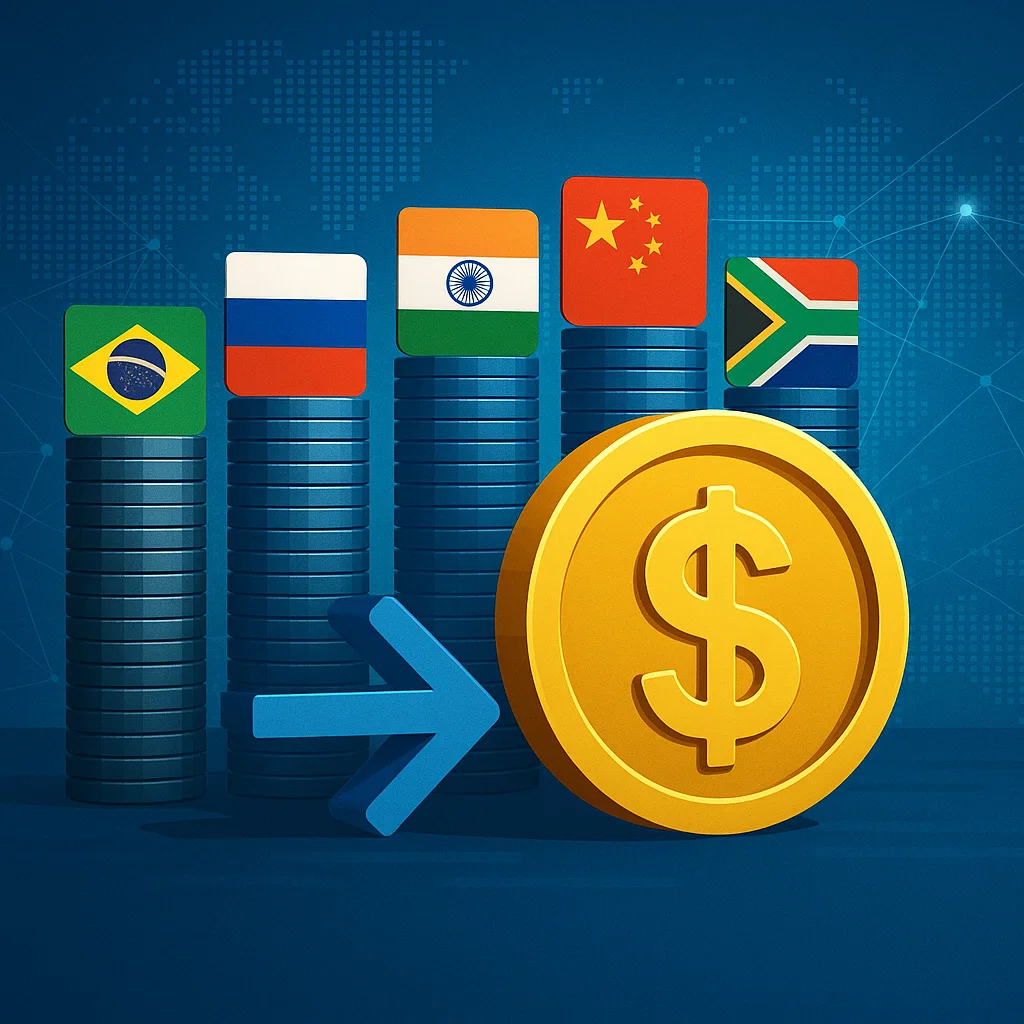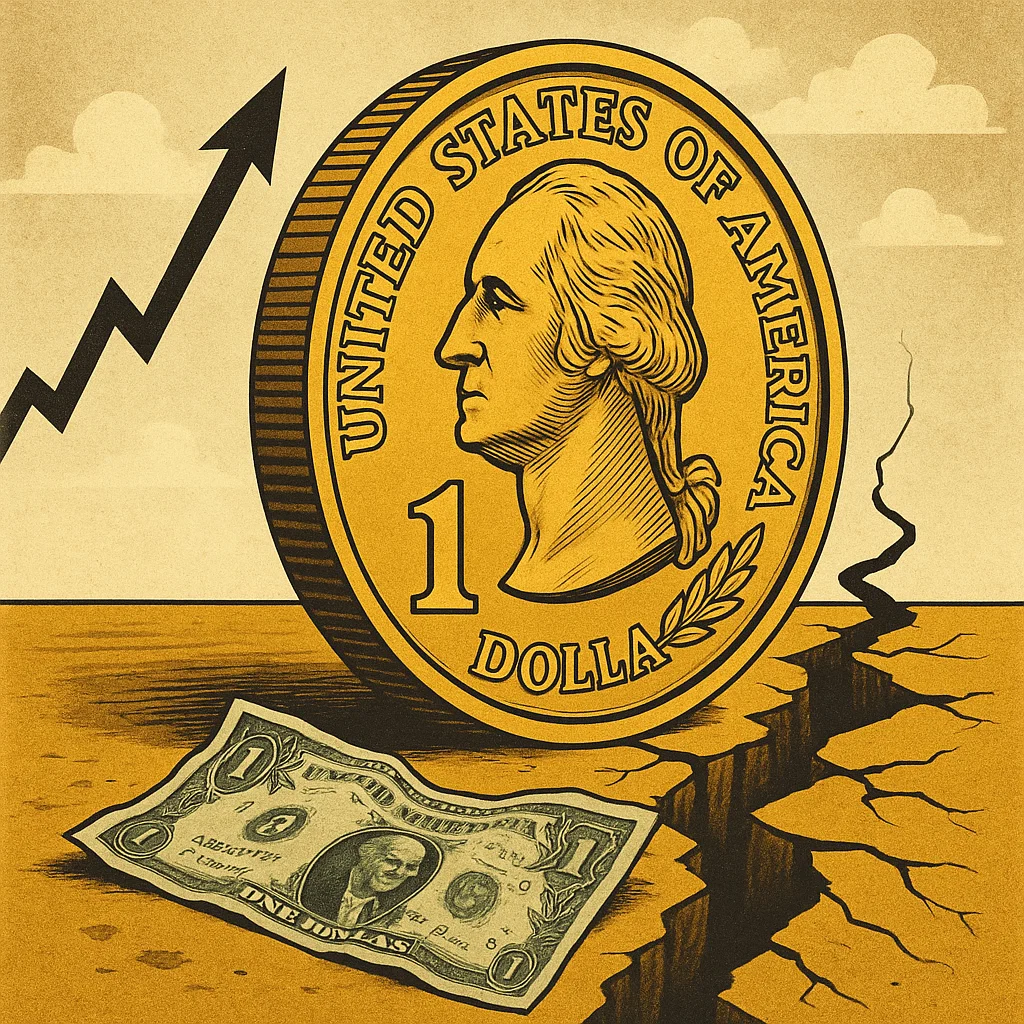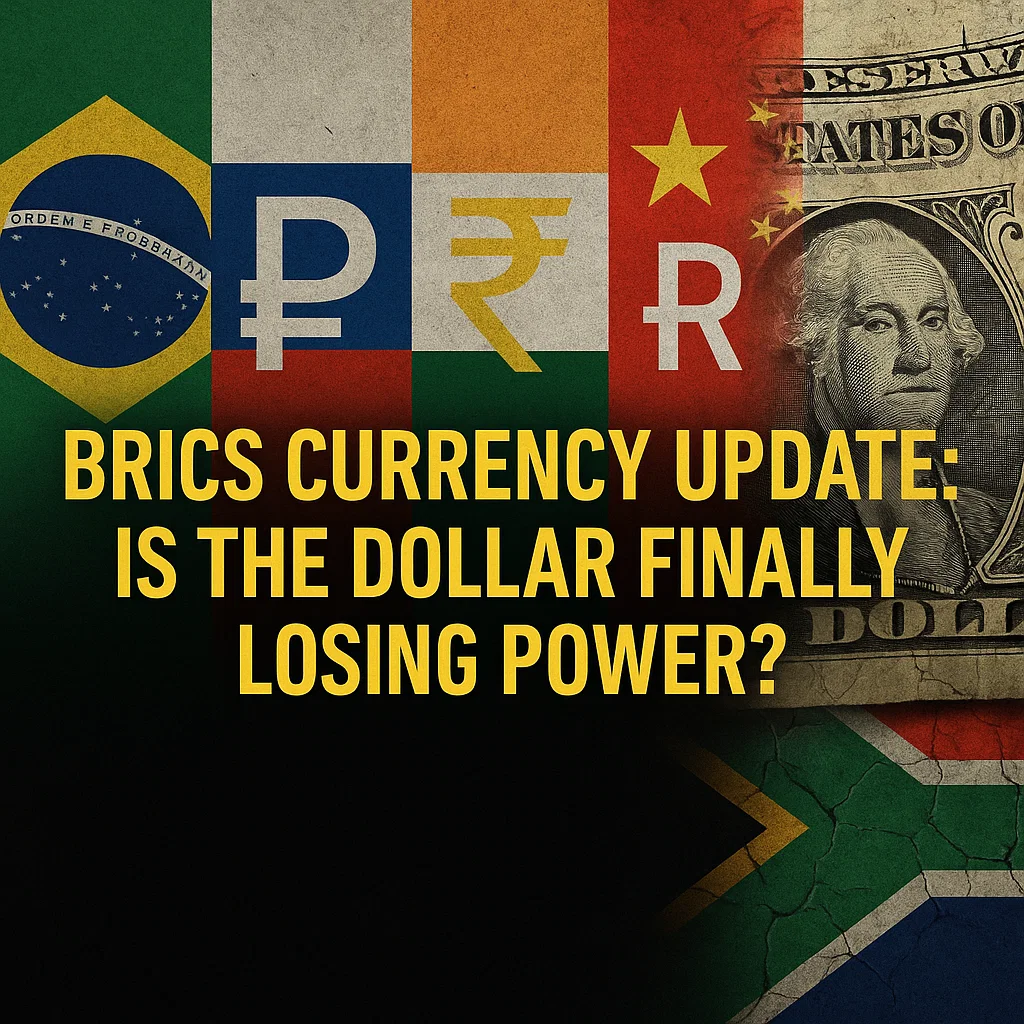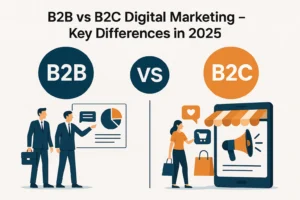The Dollar’s Era of Dominance
known collectively as BRICS—Brazil, Russia, India, China, and South Africa—have been pushing forward with an alternative global currency model. dollar has held its throne as the world’s most dominant currency. As the global reserve currency, it has been used in more than 88% of international transactions, involved in nearly all cross-border trade, and stored as a safe haven in central banks across the globe. From oil trading to foreign aid, the dollar has been the backbone of the financial world. However, as of 2025, that dominance is starting to show visible cracks. An ambitious group of emerging nations,Their goal? To create a new world order in finance—one where the dollar is no longer the sole ruler.
What Is BRICS and Why It Matters
The BRICS alliance represents over 40% of the global population and a significant chunk of the world’s economic output. These five countries have increasingly voiced their dissatisfaction with the Western-dominated financial system. Institutions like the IMF and World Bank have long been perceived as biased towards U.S. interests. The BRICS bloc, over the past decade, has aimed to create alternatives: a BRICS Bank (New Development Bank), intra-bloc trade agreements, and now a common currency. With economic clout, political will, and technological readiness, BRICS now poses a genuine challenge to the global monetary status quo.
Why BRICS Wants to Replace the Dollar

The motivations behind creating a BRICS currency go beyond economic convenience. One of the strongest driving factors is de dollarization the gradual shift away from using the U.S. dollar for international trade. Countries like Russia and China have long been uncomfortable with how the U.S. can weaponize the dollar by imposing sanctions or freezing assets. Moreover, the U.S. monetary policy—especially high interest rates from the Federal Reserve—often causes ripple effects globally. BRICS nations argue that they deserve financial autonomy and a system that reflects a multipolar world order. Additionally, reducing dependence on the dollar can help these countries avoid currency manipulation risks, reduce transaction costs in trade, and secure more resilient economies.
2025 BRICS Summit: The Turning Point
At the 2025 BRICS summit held in Kazan, Russia, the long-discussed currency project finally took center stage. The group announced the formal development of a new digital currency, tentatively called “R5”, a nod to the first letter of each member country’s national currency (Ruble, Rupee, Real, Renminbi, Rand). The R5 is set to operate primarily in digital form, leveraging blockchain and distributed ledger technology to ensure secure, efficient, and transparent transactions. BRICS leaders emphasized that this currency is not aimed at replacing national currencies internally, but rather facilitating cross-border trade among member nations and other willing partners.
Gold and Commodities: The R5’s Secret Weapon
One of the most striking elements of the BRICS currency plan is that the R5 will be partially backed by gold and a basket of key commodities such as oil, rare earth metals, and food staples. This marks a significant departure from the fiat nature of the U.S. dollar, which has not been backed by gold since 1971. A commodity-backed currency aims to offer greater stability and global trust. As inflation hits several economies worldwide, a currency that is tethered to real-world assets could attract countries and investors looking for alternatives. The backing is also symbolic—signifying that the BRICS currency will be rooted in real economic value, not just political trust.
Pilot Programs and Digital Infrastructure
By mid-2025, the BRICS countries had already initiated pilot projects using the R5 currency for trade between Russia, China, and India specifically in defense contracts, pharmaceutical exports, and energy deals. These transactions are being processed on a blockchain-based infrastructure that bypasses traditional systems like SWIFT. China’s CIPS and Russia’s SPFS systems are also being integrated to allow real-time settlement and avoid dollar-denominated routing. If successful, these pilot programs could evolve into a wider adoption model across Africa, South America, and Asia. Digital infrastructure is crucial to this plan, and BRICS nations have accelerated their efforts to secure their networks from cyber threats and surveillance.
The Dollar’s Strength and Vulnerabilities

Despite these developments, the U.S. dollar remains the world’s most powerful currency in 2025. It still accounts for over 58% of global reserves and dominates international bond markets. The U.S. economy, with its depth, liquidity, and trustworthiness, gives investors little reason to exit. However, vulnerabilities are growing. America’s national debt has crossed $35 trillion, inflation remains a concern, and political instability continues to unsettle global markets. Moreover, the global south is increasingly pushing for currency diversification, and bilateral trade agreements are beginning to favor local currencies. Saudi Arabia, for instance, has started accepting yuan and rupees for oil sales something unthinkable a decade ago.
Global Reaction and Shifting Alliances
The global response to the BRICS currency has been mixed. Western institutions like the IMF and World Bank have acknowledged the rising “financial fragmentation” in their annual reports. Countries like Iran, Egypt, the UAE, Argentina, and Ethiopia have either joined BRICS or expressed interest. The expansion of BRICS in 2024–25 gives this new financial project broader legitimacy. Even the African Union has been in talks to create a continental digital currency, possibly aligned with the BRICS model. Meanwhile, the West is not standing still Europe is pushing ahead with its digital euro, and the U.S. Federal Reserve is conducting advanced research into a digital dollar (CBDC) of its own.
India’s Strategic Role in the BRICS Currency
India’s participation in the BRICS currency project is both crucial and complicated. As one of the largest economies in the bloc, India can bring substantial legitimacy to the currency. However, India also maintains strong economic ties with the U.S. and the West, making its position delicate. India has shown cautious support—focusing on local currency trade, pushing for a greater role of the rupee in global markets, and strengthening fintech infrastructure to support such transitions. The Indian government has already begun testing cross-border digital transactions with UAE and Russia using the rupee. While India supports the idea of de-dollarization, it remains vigilant about preserving its own monetary independence.
Crypto and BRICS: Allies or Competitors?
Interestingly, BRICS’ move toward a blockchain-powered digital currency overlaps with the global cryptocurrency movement. While BRICS countries have largely been skeptical of decentralized crypto like Bitcoin and Ethereum, they are embracing blockchain for centralized financial systems. Some analysts argue that if BRICS can show that a digital, commodity-backed currency works at scale, it could pave the way for central bank digital currencies (CBDCs) globally. On the flip side, crypto advocates believe BRICS’ actions may push even more people toward decentralized alternatives, especially in countries where governments lack transparency. Either way, the technological overlap is real, and the future of money will likely include a mix of CBDCs, regional digital currencies, and private crypto assets.
Investor Strategies in a De-Dollarizing World
For investors, the transition to a multipolar currency world is both a challenge and an opportunity. Gold prices have already seen a surge, rising past $2,500 per ounce in early 2025 as fears of dollar weakness grew. Commodity-based ETFs, BRICS market indices, and foreign currency assets are gaining traction. Smart investors are diversifying their portfolios, holding a mix of USD, BRICS-linked assets, and even cryptocurrencies. The volatility of a changing financial world requires hedging strategies, geopolitical awareness, and a long-term view. Business owners engaged in international trade are also advised to prepare for multi-currency settlements and potential shifts in forex regulations.
Will the R5 Dethrone the Dollar?
The most important question remains: can the BRICS currency replace the dollar as the global reserve currency? The short answer is not yet. But the long-term trajectory suggests a gradual erosion of dollar dominance. If the R5 continues to gain traction, secures strong backing, and builds global trust, it may not need to “replace” the dollar outright. Instead, it could coexist as a major alternative, ushering in a new era of financial multipolarity. The success of such a project depends not just on economic strength, but on political unity, technological robustness, and global adoption.
A Shifting World Order in Finance
2025 may go down in history as the year when serious cracks appeared in the dollar’s long-standing dominance. The BRICS currency initiative represents more than just economic innovation it’s a declaration of financial independence by the Global South. As countries like China, India, and Russia build digital alternatives to Western systems, the world is moving toward a new, more decentralized financial future. While the dollar remains powerful, the writing is on the wall: it is no longer untouchable. The age of singular currency dominance is fading, and the future belongs to a diversified, balanced, and digitally interconnected financial ecosystem .














